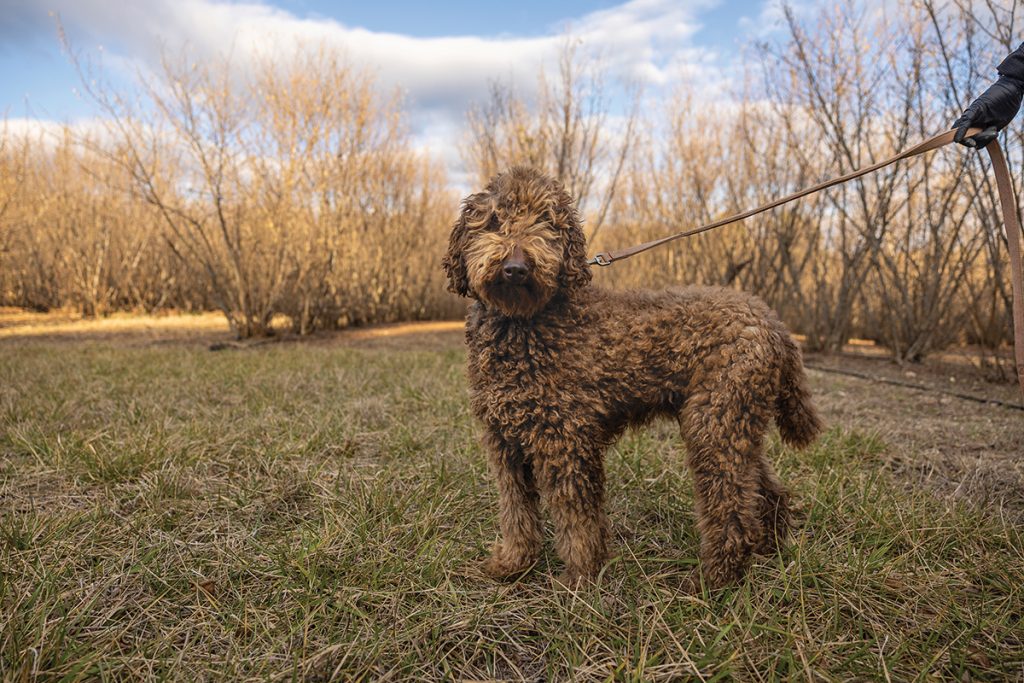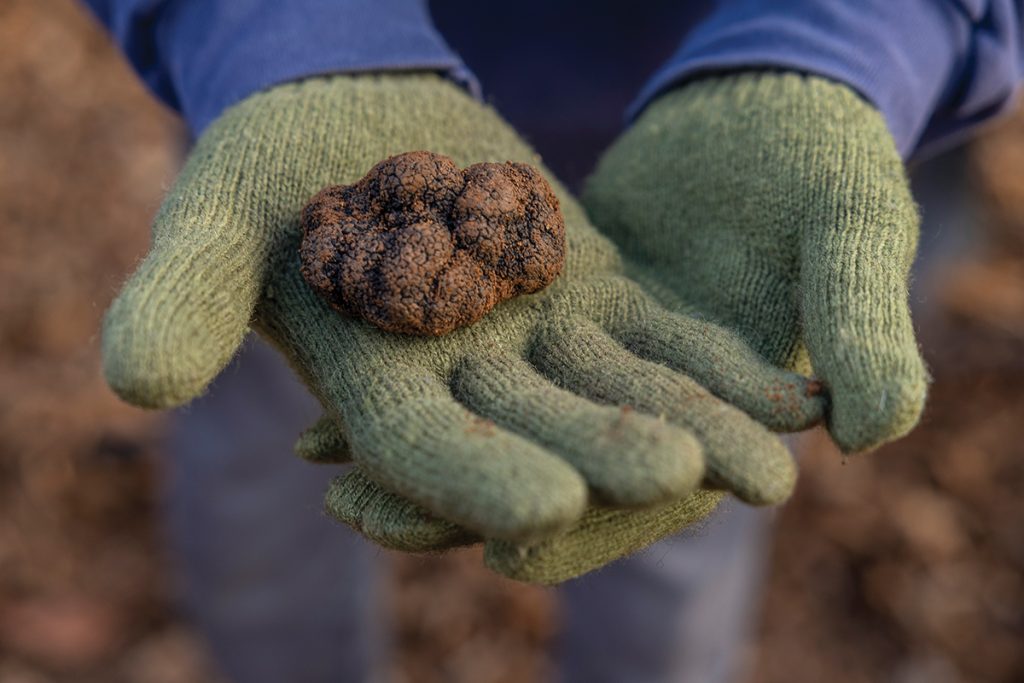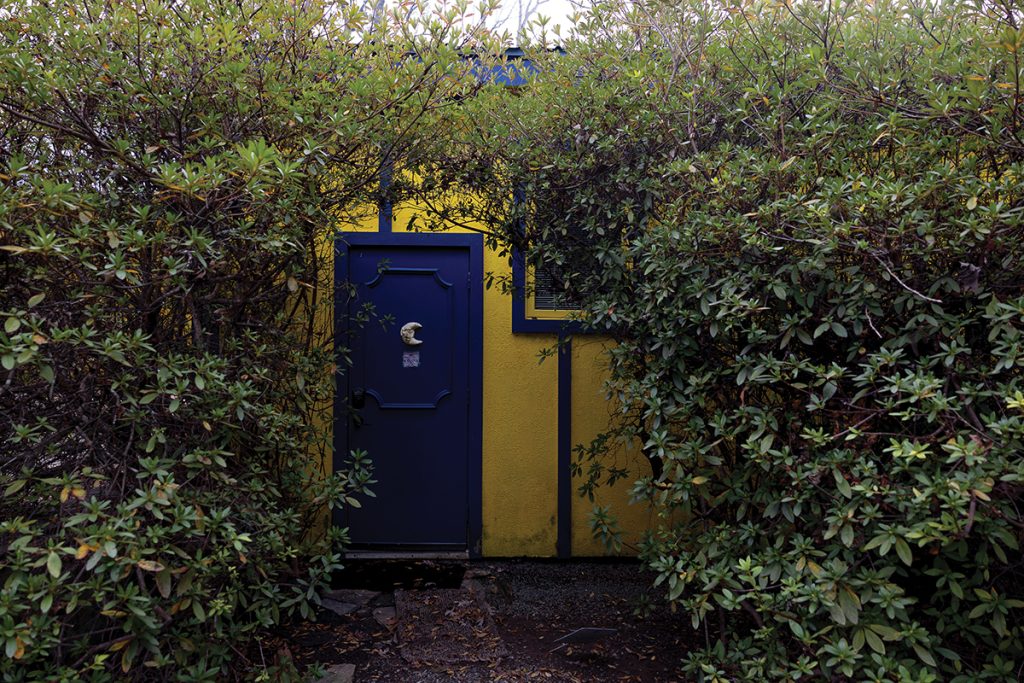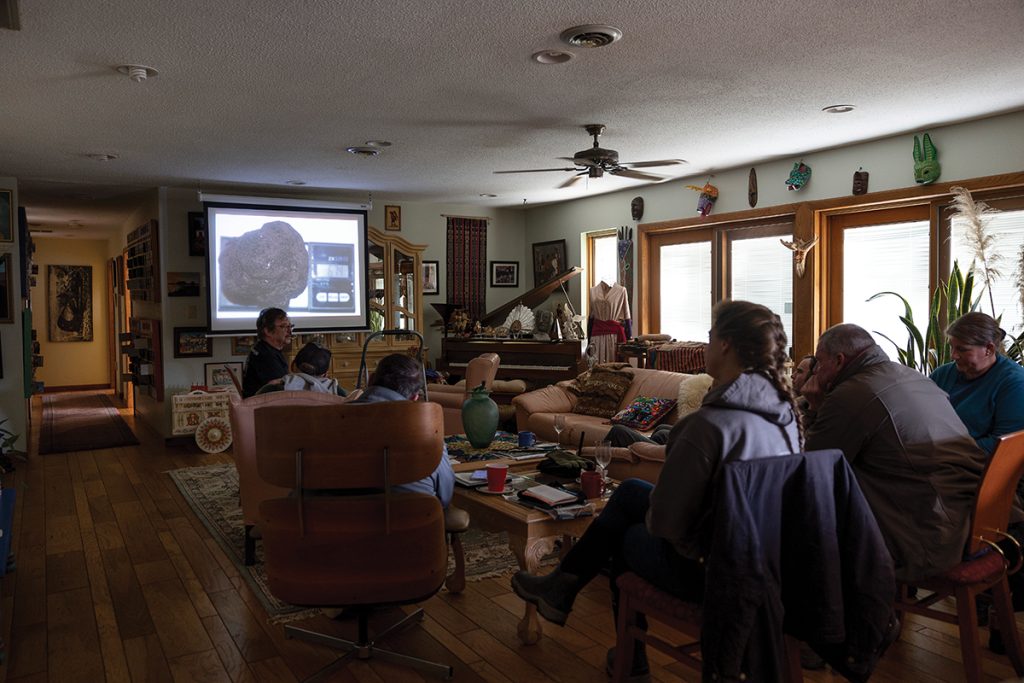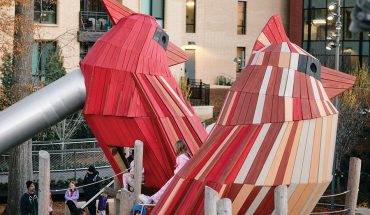Frank Garland is credited with fueling the truffle craze in the United States in the 1990s — then a disease wiped out his entire orchard.
by Dale Edwards | photography by Bert Vanderveen
About three years after he planted 4,500 hazelnut trees on his sprawling orchard, Franklin Garland could see small circles of dried, brown, dead grass starting to form at the base of each tree. He smiled, satisfied that things underground were working as they should.
Garland is a truffle farmer, the owner of Garland Truffles, a rolling 10-acre orchard on the outskirts of Hillsborough. Over the decades, he has served as president of the North American Truffle Growers Association, which represents more than 100 truffle growers nationwide. NATGA has dubbed him “the founding father of the truffle industry in the Americas.”
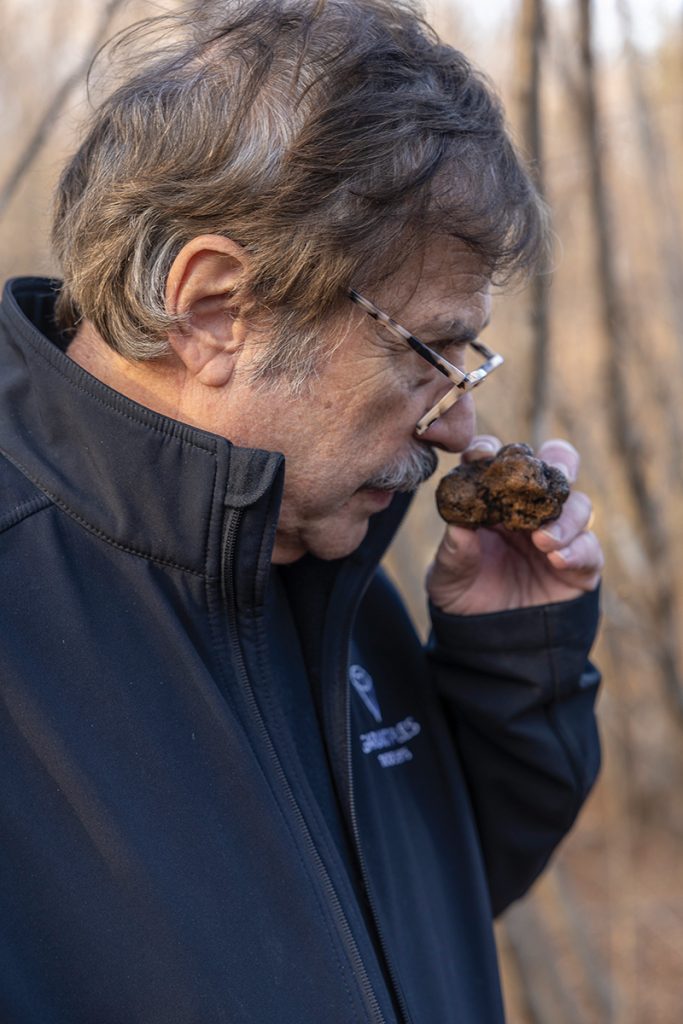
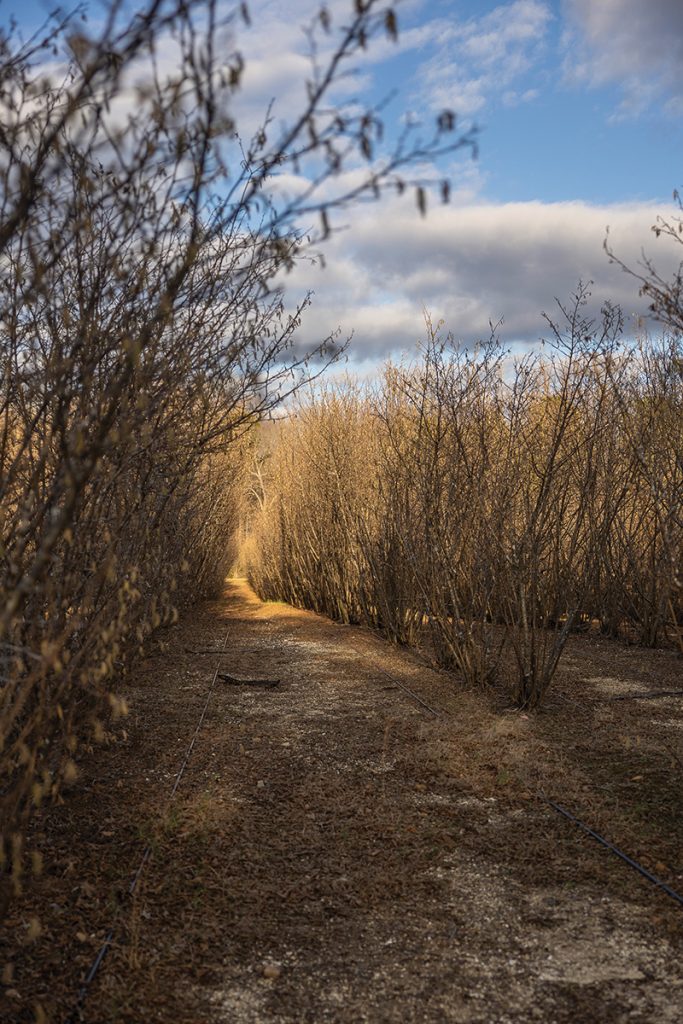
The brown area, called the burn or “brûlée,” is a sign that the tree’s roots and the fungi attached to them are growing together. That’s a good thing, because most of the activity needed to grow truffles takes place underground. The symbiotic partnership between the roots and the fungi is fueled by the nutrients from the other plant life at the surface around the tree. As the brûlée expands around each tree in the rows of the orchard, the circles grow together to form a sort of scalloped edge.
But it takes a long, long time. Back in 1979, when he was 28 years old, Garland didn’t know truffles from a chunk of dirt. That’s when his father Raymond, an investor and devoted reader of The Wall Street Journal, showed his son an article about a new method out of France that used inoculated trees to produce truffles.
The elder Garland knew his son was into growing things — Franklin was already experimenting with raising off-season tomatoes in his greenhouse — and thought truffles might be something he could try. Plus, it could turn out to be a good investment.
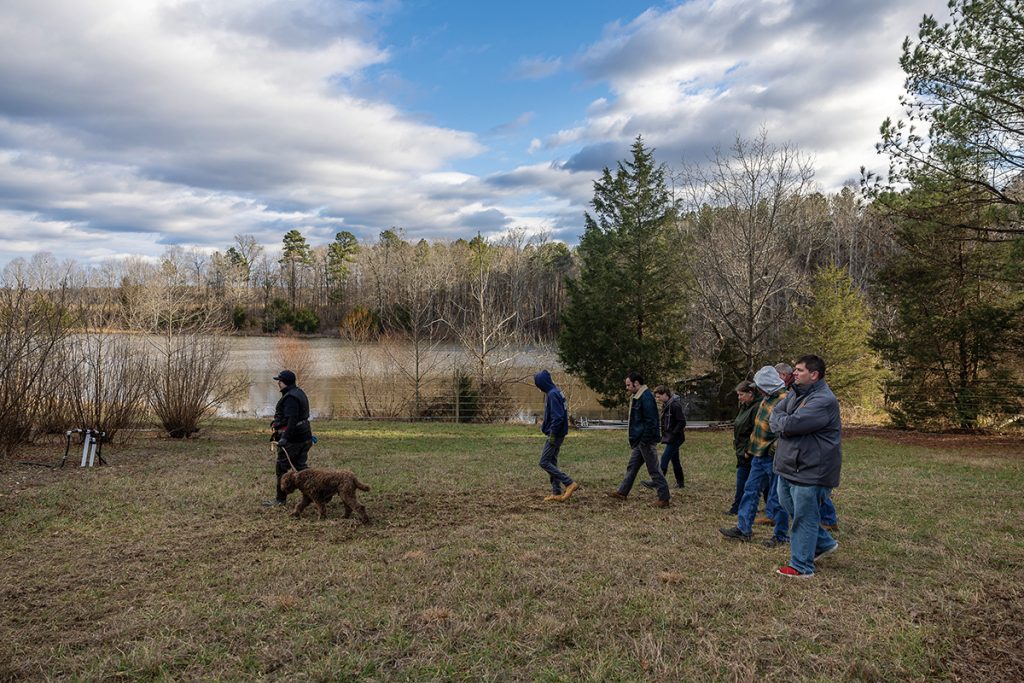
“My dad said, let’s check this out, so we did,” Franklin says. They learned of a French company that was holding meet-and-greets and selling the inoculated plants in the U.S., so the two headed out to Santa Rosa, California. “They wined and dined us and showed us everything about truffles… except the truffles themselves,” he says. “We had a very nice meal, drank very good wine, but no truffles. We were very skeptical.”
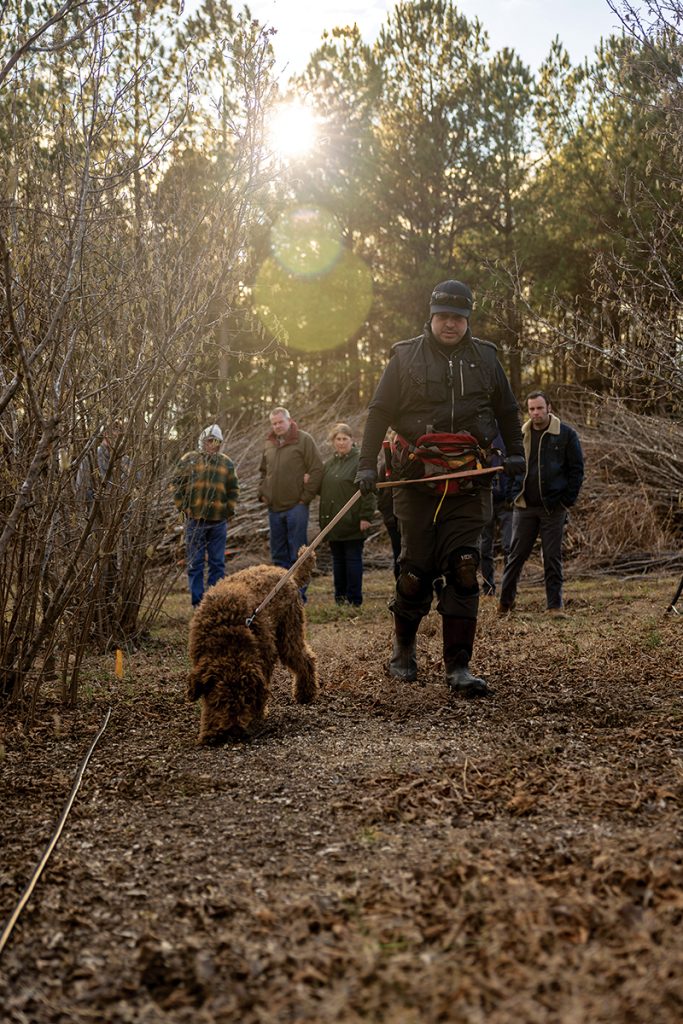
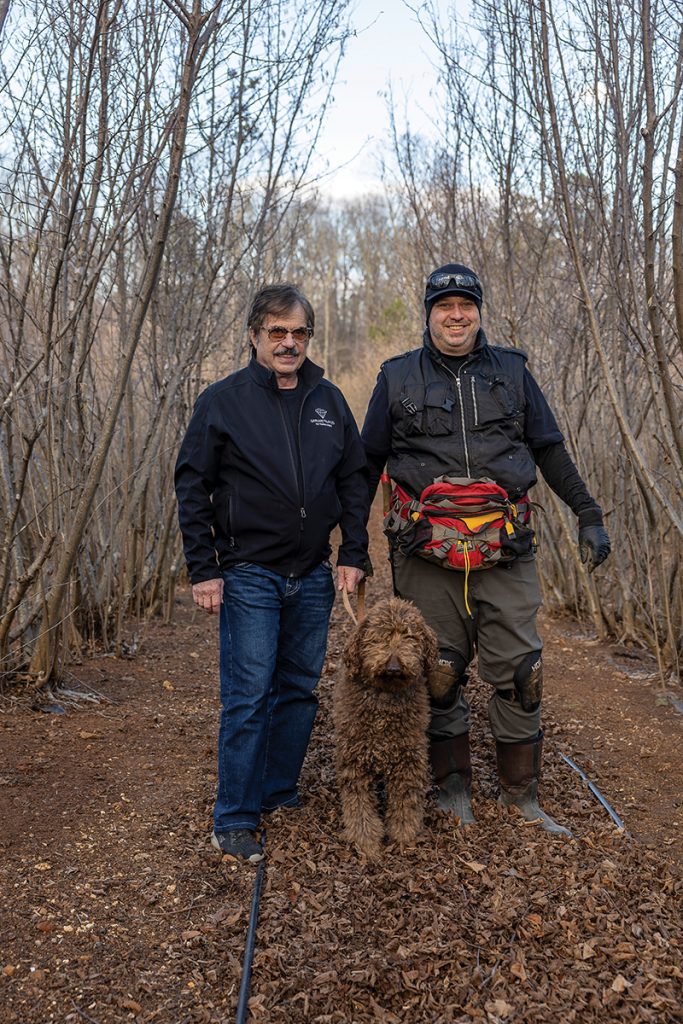
But Franklin was determined to see if this rare buried treasure was for real, so he and his dad traveled to France to further their exploration of growing truffles. Franklin visited a nursery that had a large greenhouse, similar to the one he already had going in Hillsborough, that was full of small plants. But still, he saw no actual truffles.
Finally, “we went to a restaurant in the city of Lyon, and that’s where we had our first truffle,” Franklin said. “It was a truffle omelet, and I was hooked. I fell in love with the taste. With the aroma. I knew then that I had to grow truffles. Even if it was just for me.” Today, the driveway leading to Garland Truffles is about a half-mile long. It threads through mature trees and past winding creeks before you reach the house that Franklin built himself, trimmed in brilliant yellow and blue. Just past the backyard, hazelnut trees slope away and curve throughout the property.
In 1975, Franklin bought the mostly wooded tract of land where he would later build his home and his greenhouse. In 1980, just a year after learning about truffles in the first place, he purchased and planted 750 inoculated trees and became a farmer.
Of that initial group, 400 survived. In 1992, the first truffles at his orchard were harvested, and for the next 10 years, Franklin’s farm produced about 50 pounds of truffles per harvest — an exquisite delicacy that can fetch more than $1,000 per pound. Clearly, Franklin’s father was right about truffles being a strong investment.
Speaking of investments: the Garlands say it’s a good idea, when the time is right, to invest in a trained truffle dog to harvest the truffles. While pigs are commonly used in France, and an Italian breed of dog, the Lagotto Romagnolo, is known for its excellent nose, Franklin prefers more common breeds. “The best truffle dog I’ve ever had was a yellow Labrador.
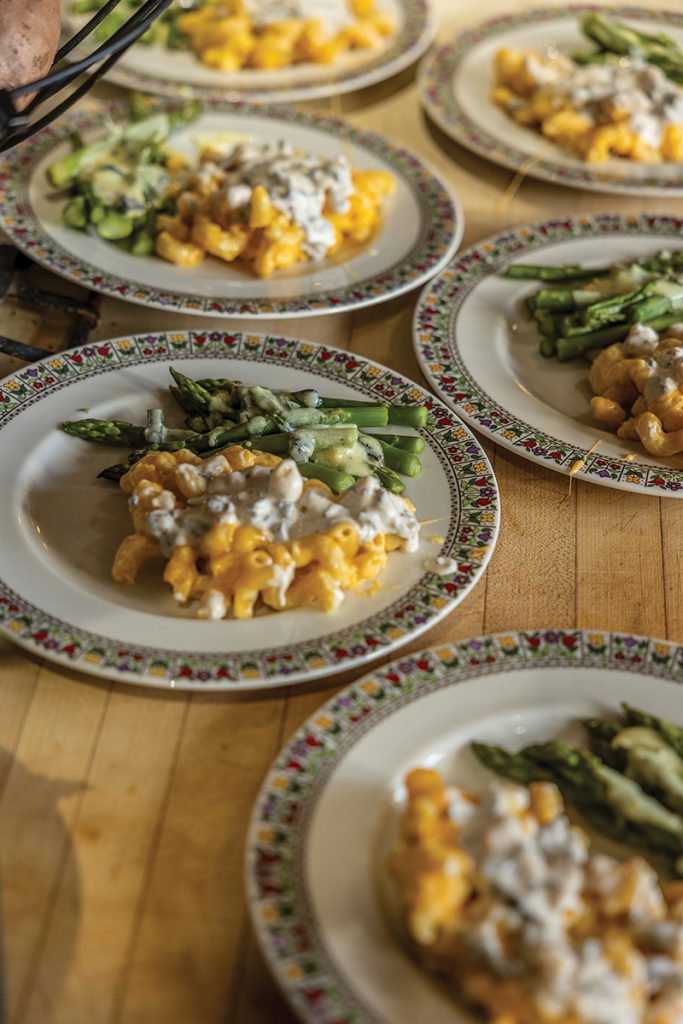
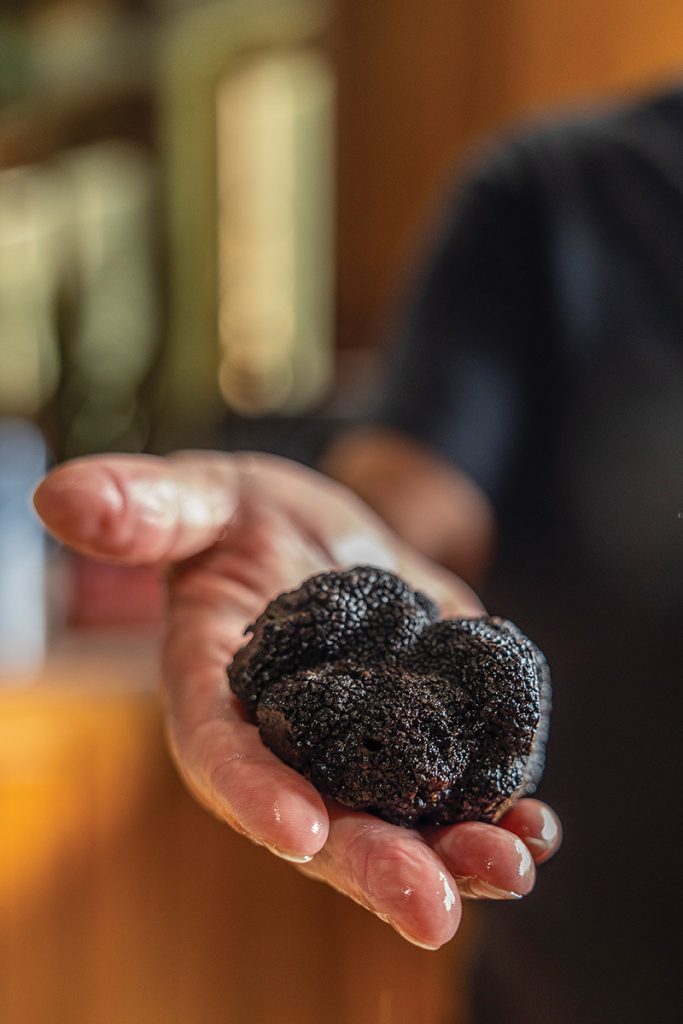
He would paw at a spot, dig around it, pop out a truffle, take it in his mouth and then drop it in my hand,” Franklin says. “Can’t beat that.”The Garlands now have two standard poodles that Franklin trained to sniff out the tasty, buried treasures.
“You can pretty much train any kind of dog to find truffles,” Franklin says. “Some breeds do a better job than others of letting you know where they are. Our poodles sniff out the truffles and paw at the ground where they’re growing.”
Since their orchards have been established, the demand for these rare spores has been constant. Franklin and his wife Betty, who is co-owner and operator at Garland Truffles, enjoy finding new uses for them. In addition to truffle omelets, Franklin and Betty have made truffle butter, truffle ice cream and truffle champagne.
While 50 pounds from a harvest may not sound like a big deal, for a long time, the Garlands were able to have year-after-year success growing truffles in the U.S., which set them apart from other would-be fungi farmers.
Franklin’s truffles attracted the attention of renowned chefs and even celebrities. Franklin and one of his truffle-sniffing dogs earned an appearance on the Late Show with David Letterman in 2004, and in 2007, Martha Stewart, who had an interest in growing her own truffles, traveled to North Carolina to visit the farm. While there, Franklin prepared an omelet using truffles harvested from his inoculated trees. Stewart raved about the dish, and later invited him on to her show to prepare the omelet.
Susi Gott Séguret, chef and founder of the Seasonal School of Culinary Arts in Asheville, credits the Garlands with proving that truffles grown on American soil were just as viable as the ones grown in Europe. “Franklin and Betty supplied the truffles in the early years of the Asheville Truffle Experience festival,” Séguret says, referring to an annual event where ticket holders try an eclectic menu of truffle foods and drinks, mingle with aficionados, and learn about planting and harvesting the prized spores.
“There are different truffle species that are commonly eaten, and each of them has a distinct profile,” Séguret explains, noting Garland Truffles primarily produces the tuber melanosporum variety, also known as the black truffle. “It’s my favorite — it has a flavor that hints at molasses or black olives. It’s kind of a deep, dark, sexy flavor.”
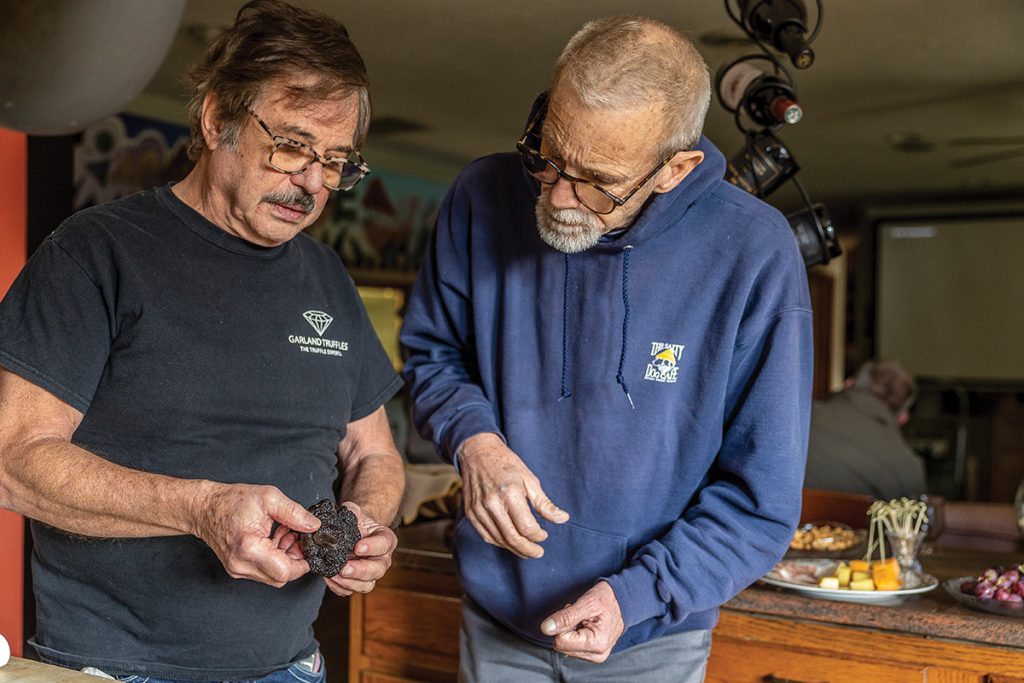
In 2004, Franklin’s original orchard was wiped out by the disease Eastern Filbert Blight, or EFB. Fearing any planting of the same kind of truffle trees would meet the same fate, he spent the next seven years experimenting with his own version of inoculated trees before finding one that was resistant to the disease.
In 2012, the Garlands were once again ready to make their mark as truffle farmers in the U.S., planting 4,500 new trees that are even now producing truffles in spots. By next year, Garland Truffles should be providing between 500 to 1,000 pounds per harvest and will be among the largest truffle-producing orchards in the nation.
In addition to selling truffles, Franklin and Betty sell trees that they have inoculated through their own technology and formulas, which they keep secret. The pair hosts classes and workshops for people who are interested in starting their own truffle farms. (Though “we get a lot of lookie-loos,” Franklin says.
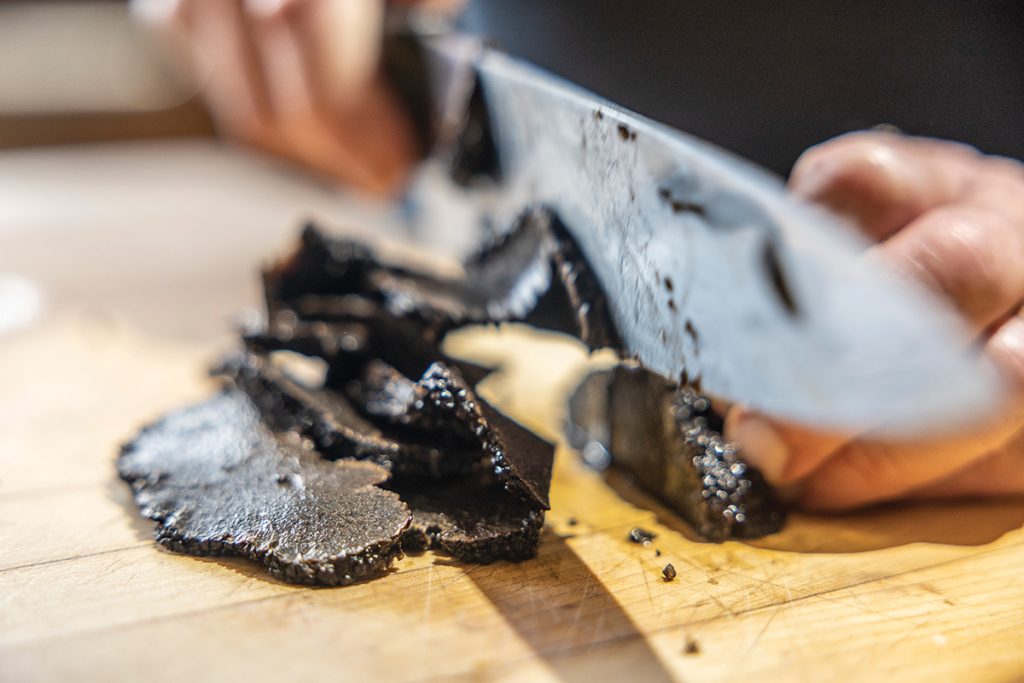
“They are more interested in coming here and getting free truffles to eat.”) The Garlands are bluntly honest with people who sign up. “If you don’t have a lot of money to get started and a lot of time and money to maintain it, we’re going to discourage you from trying truffle farming,” Betty says. “It’s an expensive undertaking. We want people to understand that you need deep pockets to grow truffles.”
“And patience,” Franklin jokes.
And if all goes as planned, next year, the Garlands’ poodles will have oodles of truffles to find, and Franklin cannot wait. “I just love them,” he said. “From the first time I tasted them, I’ve never stopped loving truffles.”
This article originally appeared in the February 2024 issue of WALTER magazine.

